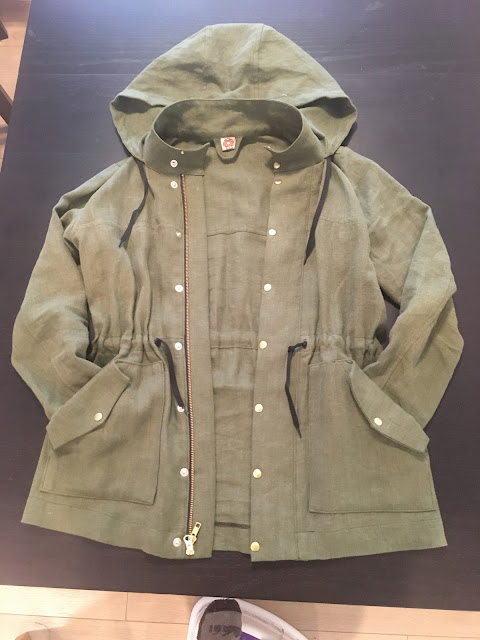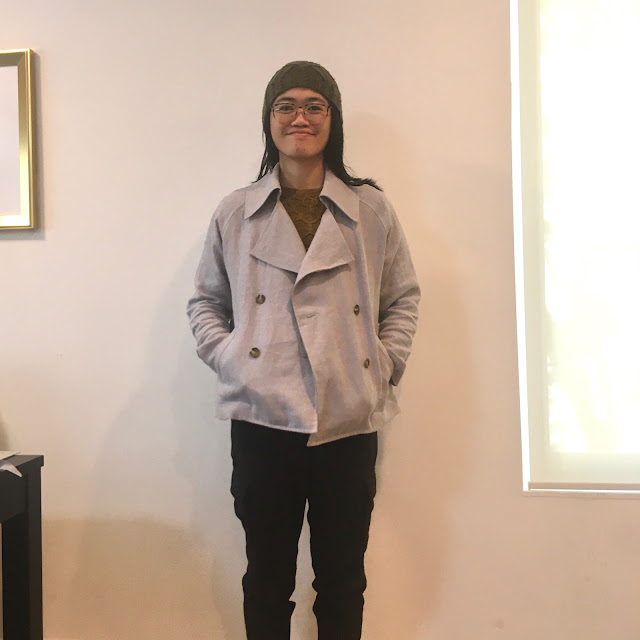Specs
Fabric: 4C22 MOSS Softened Linen (7.1 oz/yd2)
Hardware and tools:
- 20L (1/2") gold spring snaps
- shoelaces that I got from my local Buy Nothing group, haha
- Spring Snap Setter Tool Kit technically for 5/8" snaps, but it still worked for my snaps, thankfully
- 24" #5 Brass Two-Way Jacket Zipper
Size: 8
Mods:
- double pockets: in the flap and out of the flap
- shortened hem by 2"
- sleeve lift alteration, following Sew Sew Live's method
- hood and collar separation alteration
- removed cuff placket and just sewed regular cuffs
- shortened sleeves ~1"
- flipped placket positioning (more about that later)
The good and the bad
There's a lot I don't like about this jacket, mostly because of how difficult the construction was (partially my fault). But first, the good:
- love my two way separating zipper choice
- double pockets
- very useful jacket
And that's it lol. Well a useful jacket does make up for a lot. But as for the bad:
- I bought the paper pattern, which is a pattern type I don't work with much anymore, and I HATE it. So I ended up cutting the size I needed and gluing all the pieces to thicker paper so that I wouldn't have to deal with tissue, also because I didn't want to trace onto new paper. That was a tedious process.
- I sewed a muslin and the sleeves were very restrictive. It seems like they were drafted how a blazer's sleeve would be, so it would look nice when arm is at the side, but this makes it hard to lift the arm and move it freely. I bet a lot of people had this issue. An anorak is in the realm of active outerwear, so you want the arms to be able to move freely. Luckily, I was able to do a sleeve lift and fix the issue completely (linked above). I had to add 1.5" to the underarm and the sleeve, so a total of 3". Crazy!
- The interfacing I used was not ideal for this fabric. When folded and pressed, the fabric did not crease well at all. It was annoying to deal with. Will go back to my go-to interfacing in the future.
- My pocket construction could've been changed to make it easier to sew and attach.
- The snaps were difficult to install correctly with my too lightweight 10 oz hammer. Going outside to set them on the concrete ground and also using my dad's much heavier hammer helped (gotta get me a heavier hammer now).
- Flipping the placket was probably unnecessary, and made my brain hurt more than I needed, haha. Speaking of...
- Definitely use at least a 16 oz hammer to set the snaps, unless you have strong arms.
- Hole punch one side of the snaps, then line it up where the other side will be, mark it and hole punch it. This is the easiest way to align all the snaps as perfectly as you can.
- Unless you have a very big anvil, set the snaps outside on some concrete, instead of your table. The concrete is a much stiffer surface and won't "give" when you hammer, so you'll be able to hit it less. Also you don't want to crack/break your table after all.
 |
| always enjoy my custom labels though! |






















